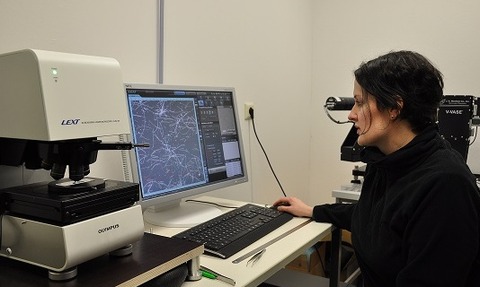
An application note from Olympus uncovers how the LEXT OLS4100 3D confocal laser scanning microscope (CLSM) can be applied to research into organic semiconductors and transparent electrodes.
Moving towards the sustainable manufacture of photovoltaics, Manuela Schiek’s research group at the University of Oldenburg, Germany has been using the product’s high-resolution analysis and stitching function capabilities to enhance its research.
Current solar cell manufacture processes can be quite hazardous and energy consuming in contrast to the ‘green’ intentions of the end products.
Schiek’s research focuses on alternative materials for solar cell manufacture that are non-hazardous and readily available, including the use of organic semiconductors and a transparent electrode system formed from a silver nanowire mesh.
With its complex multi-layered structure, surface analysis techniques provide vital insights into the workings of a solar cell.
Combining the ability to generate detailed, true-colour optical images with the non-contact capabilities of laser scanning technology, the LEXT 3D CLSM enables high precision optical profilometry and metrology.
In Schiek’s work, the LEXT was employed to accurately measure the thickness of organic semiconductor materials in the energy-capturing active layer of solar cells as this can critically affect their efficiency.
The LEXT was found to be faster, more efficient and more accurate than stylus-based techniques through its non-contact capability to measure soft or adhesive surfaces at high-resolution.
The expanded field of view offered by the rapid and intuitive stitching function of the LEXT also improved the efficiency of surface roughness evaluation in comparison to Atomic Force Microscopy (AFM).
The LEXT enabled viewing of a more representative sample of silver wire mesh on the transparent electrode surface and this, combined with the wide magnification range, helped to identify regions of unwanted aggregation that would otherwise have been missed.
Schiek said: “The LEXT has been a great asset in our work. As well as being much faster than AFM, the area that you can inspect is a lot larger, with true colours and a 3D height profile for more insightful analyses.”
The application note is available to view on the Olympus IMS website.






